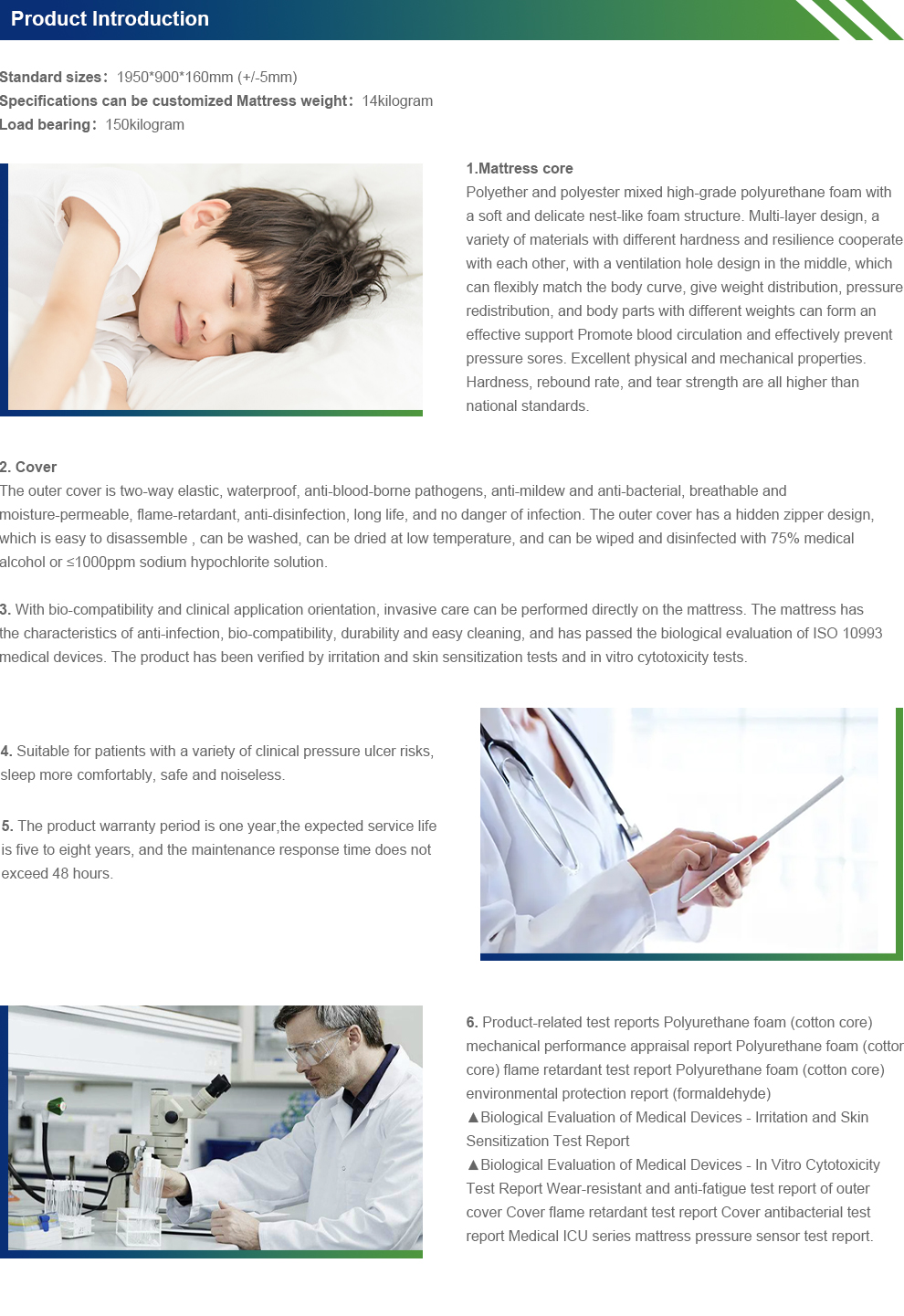Choosing the Right Therapeutic Mattress for Enhanced Hospital Patient Comfort and Support
The Importance of Therapeutic Hospital Mattresses for Patient Care
In the realm of patient care, particularly within hospital settings, comfort and safety are paramount. One of the essential tools in achieving this is the therapeutic hospital mattress. Designed specifically to prevent pressure ulcers, improve patient comfort, and promote healing, these specialized mattresses play a crucial role in modern healthcare.
Understanding Pressure Ulcers
Pressure ulcers, also known as bedsores or decubitus ulcers, are injuries to the skin and underlying tissue that typically occur over bony areas when pressure is applied for prolonged periods. Patients who are bedridden, have limited mobility, or are recovering from surgery are at an increased risk of developing these sores. The impact of pressure ulcers extends beyond physical discomfort; they can lead to serious infections, longer hospital stays, and increased healthcare costs. Therefore, investing in a proper mattress is a critical aspect of preventive care.
Features of Therapeutic Mattresses
Therapeutic hospital mattresses are equipped with several features designed to minimize the risk of pressure ulcers. One common type is the air-filled mattress, which uses a pump to adjust the pressure within different sections of the mattress. This technology allows for alternating pressure points, relieving stress on specific areas of the patient’s body and promoting better blood circulation.
Another variation is the memory foam mattress, which conforms to the body’s contours, providing even support while alleviating pressure on vulnerable points. High-density foam mattresses often incorporate special materials that wick away moisture and regulate temperature, creating a more comfortable sleeping environment.
Additionally, some therapeutic mattresses come with built-in moisture management systems. These are crucial for patients who may experience incontinence or excessive sweating, as moisture can exacerbate the risk of skin breakdown. By keeping the skin dry, these mattresses contribute significantly to maintaining skin integrity.
therapeutic hospital mattress

The Role in Healing
Beyond prevention, therapeutic mattresses can significantly aid in the healing process for patients with existing pressure ulcers. Advanced models, such as those with dynamic or reactive surfaces, promote micro-movements that enhance blood flow to healing tissues. This encourages faster recovery and minimizes the discomfort associated with existing sores.
The use of therapeutic mattresses also supports the holistic approach to patient care. A comfortable patient is more likely to experience less anxiety and stress, which can contribute positively to their overall recovery. Comfort is not merely a luxury; it is an essential component of effective care that aids in emotional and psychological healing.
Considerations for Healthcare Providers
When selecting therapeutic hospital mattresses, healthcare providers must consider several factors. The patient’s specific needs, such as their level of mobility, existing health conditions, and the duration of hospitalization, should guide the choice of mattress. Furthermore, understanding the maintenance requirements and durability of the mattress can help ensure that it remains effective over time.
Education is also vital. Staff must be trained on how to use and maintain these mattresses properly, ensuring that patients receive the maximum benefit. Regular assessments of patients' skin integrity should be conducted to identify any early signs of pressure ulcers, allowing for timely interventions.
Conclusion
In conclusion, therapeutic hospital mattresses are an essential component of patient care that significantly impacts comfort, safety, and healing. By investing in high-quality therapeutic mattresses and integrating their use into daily care routines, healthcare facilities can enhance patient outcomes while reducing the risk of pressure ulcers. As the healthcare landscape continues to evolve, the focus on patient-centered solutions like therapeutic mattresses will remain critical to delivering effective and compassionate care.
-
Wave Mattress: An Innovative Care Solution for the Elderly and Bedridden PatientsNewsJun.11,2025
-
Wave Hybrid Mattress Circulation Improvement and Medical ConvenienceNewsJun.11,2025
-
Temperature Control Innovation of Gel Memory Foam MattressNewsJun.11,2025
-
Scientific Sleep Revolution of Coconut foam MattressNewsJun.11,2025
-
How to Choose the Best Gel Memory Foam Mattress for Your Sleep StyleNewsJun.11,2025
-
Application Value of Elasticity and Permeability in Coconut Fiber Foam MattressesNewsJun.11,2025
-
Why Wave Mattresses Are Essential for Elderly and Bedridden PatientsNewsMay.29,2025

